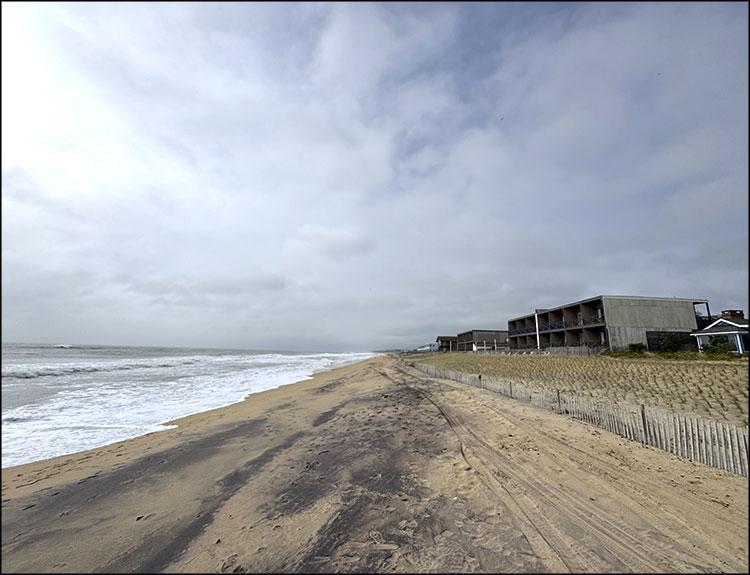East Hampton Town’s projected cost of renourishing the sandy beach created by the Fire Island to Montauk Point coastal storm risk management project will be about $28 million over 30 years, according to a project partnership agreement discussed by the town board at Tuesday’s work session in Montauk.
That number reflects the maximum amount of fill — 400,000 to 450,000 cubic yard — that would be necessary based on the initial amount of sand placed on the downtown beach.
According to the agreement, “Average annual costs for operation, maintenance, repair, replacement and rehabilitation of the project, including periodic nourishment related thereto, are projected to be $779,100.”
There will be no impact on this year’s budget. Renourishments happen in four-year cycles and the first is expected in 2027.
Town Supervisor Kathee Burke-Gonzalez recalled being on the town board when it approved geotextile bags as an interim measure for the downtown Montauk beaches. “There were some years we needed to spend one million dollars to replenish the beach, and other years we didn’t spend a dime. It’s not a given we will be spending that money,” she said.
Councilman David Lys agreed and said sometimes after storms our beaches receive “healing” southwest winds that help replace lost sand. So, the cost to replenish the shoreline will vary from year to year. The state has already bonded its initial 30-year cost, he said, and the project partnership agreement will ensure the federal government sticks to its funding promises.
If $28 million sounds like a lot, consider this: The total cost of periodic renourishment over the next 30 years for the entire length of the project is projected to be over $3 billion, with the federal government picking up 50 percent of the cost. The other 50 percent is split between New York State, Suffolk County, and the five townships whose beaches benefit from the project.
Despite this weekend’s northeaster, Montauk’s beaches are still largely sandy.
“I’ve become a FIMP geek, I guess,” said Mr. Lys, using the shorthand for the project. “If anyone has been down to the beaches in the last 72 hours, specifically in downtown Montauk, you’ll see that the FIMP project has held up. There’s definitely been a lot of erosion, and what percentage we don’t know, but either way, I am happy to have it there.”
He added that the contract will also give the town the option for the “betterment” of its beaches that aren’t part of the FIMP project.
For example, if the FIMP beaches are being replenished, the town may opt, while the dredge is offshore, to use it to take sand to other beaches, and thus save on the cost of having to transport the dredge. If the town chooses to do that, it would be for an additional cost.
“Lots of people said, ‘Why didn’t Ditch happen last time?’ “ said Councilman Tom Flight. “So now we built in that capability. This is a project that is going to buy us time. We’ll continue to face coastal erosion no matter what, but it’s imperative we make this investment.”
“Our beaches drive our economy,” said Councilwoman Cate Rogers. “When we look at a $27 million cost over 30 years, I think that is appropriate for preserving those areas.”
According to a town document, the original Fire Island to Montauk Point study resulted from a series of storms beginning with the November 1950 and November 1953 northeasters, Hurricane Carol in 1954, Hurricane Donna in 1960, and the Ash Wednesday northeaster of 1962, also known as the “5-High-Tide-Storm.”
In other words, the project was discussed for over 70 years before a dredge finally pumped nearly half a million cubic yards of sand onto Montauk’s beaches in February 2024. If all goes according to plan, and the project partnership agreement is respected, it shouldn’t take another 70 years for the area to be renourished.
Jake Turner, the town attorney, said the agreement was the same as that being contemplated by the other townships impacted by the beach nourishment project. “We’ve reviewed it and are confident it protects all of the town’s interests,” he told the board.
A resolution to approve the agreement will be on tonight’s agenda.




